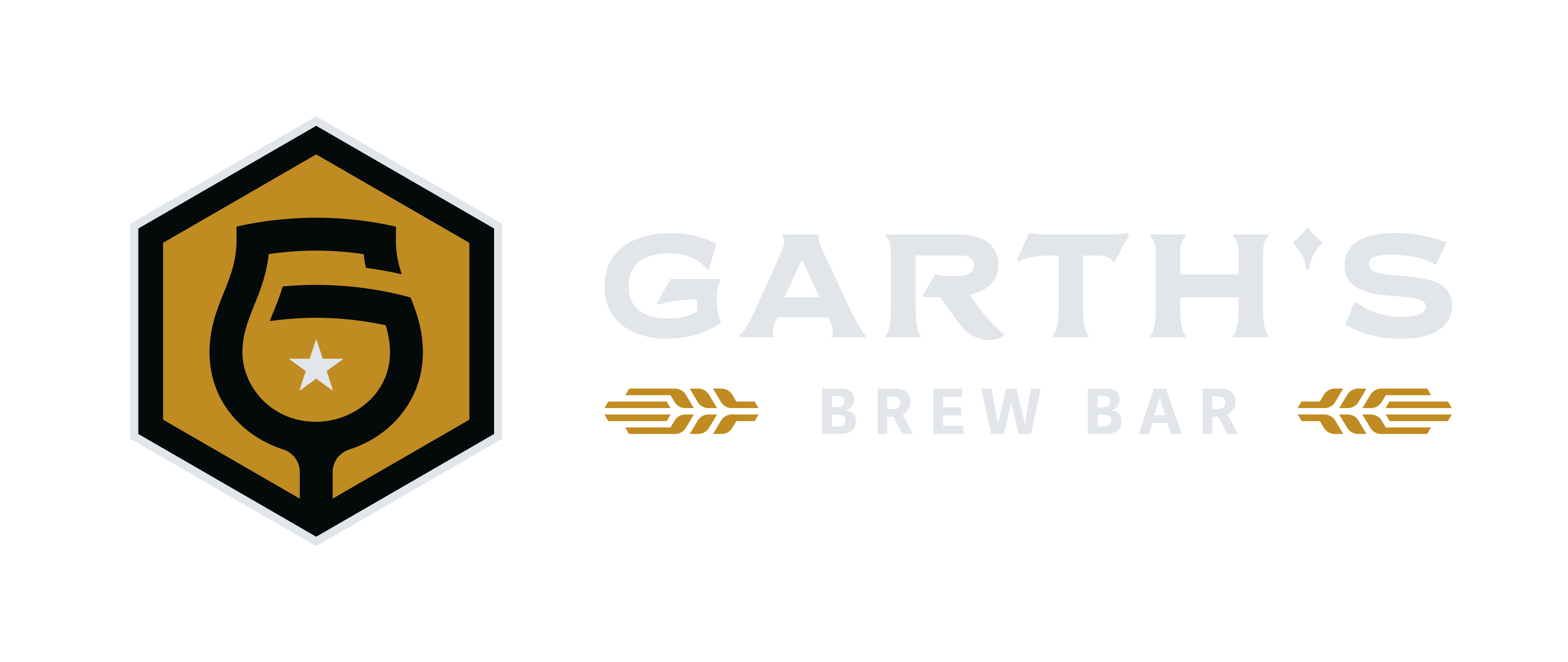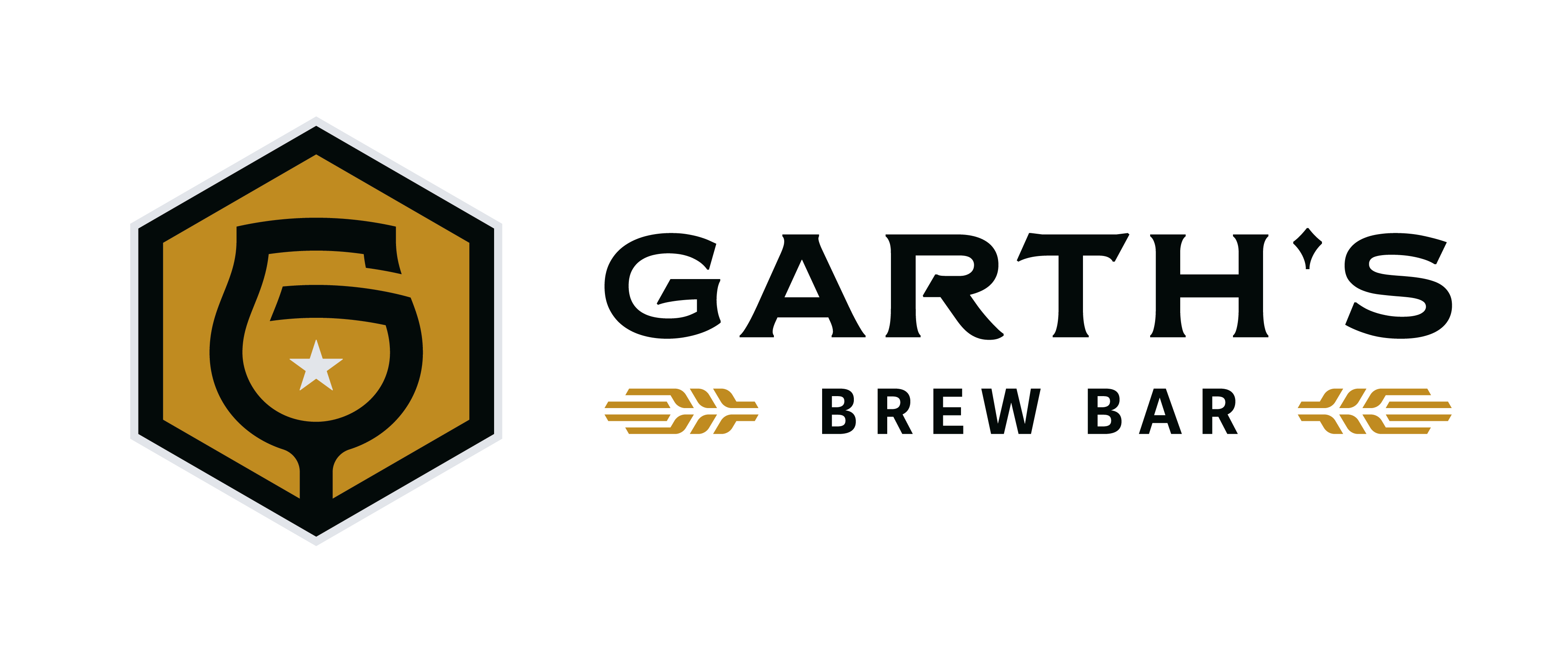When we opened Garth’s Brew Bar in December 2019, we intentionally chose the word “brew” instead of “beer.” It was an homage to our love of all brewed products from beer to kombucha to coffee. It even encompasses the convergence of the beverage industry with tea-inspired seltzers and, you guessed it, coffee-infused beers.
Breweries have included coffee as an ingredient for decades but largely in darker styles like porters and stouts. Craft breweries are now cooking up more beer styles featuring local roasty beans, injecting a bit more buzz into tasty beers. Here’s the low down on the history and current state of coffee beers.
How Coffee Is Added Into The Brewing Process
You can boil down brewing coffee beer to two methods.
- Including coffee at various stages of the brewing process
- Adding brewed coffee to your finished beer in the canning process
Each provides its own unique coffee aroma and flavor to your craft beer.
The former method treats coffee beans as a traditional beer ingredient, like malt or hops. As with these ingredients, coffee can be tossed into the brew before the boil, after, or during fermentation.
When introduced early in the process, coffee oils will volatize which helps head retention. However, cooking the coffee in the boil kettle will reduce its flavor and aroma and can add unwanted hardness or astringency. Some strongly advise against adding coffee on the “hot” side of the brewing process.
Brewers can also add coffee during fermentation, also known as the “cold” side of the process. One method is “dry-beaning” and is much like dry-hopping. Brewers add coffee beans – either whole or ground – to a mesh sack and steep them in the beer. A finer grind will add more flavor quickly to the brew, but you run the risk of coffee flecks escaping the bag and reaching the bottle or can. You can also dry-bean with a coarser grind or whole beans. It’s easier but takes longer and results in varying degrees of flavor absorption in the beer.
Finally, you can add coffee during the canning or bottling process. This provides the strongest coffee flavor and aroma but can quickly become overwhelming to the palate. Like with pouring hot coffee, it requires a steady hand to get this mixture correct. (Some recommend homebrewers use an eyedropper to add coffee directly to the can or bottle.) Brewers usually recommend using cold-pressed coffee for this. Using hot coffee can result in bitter flavors, which only harshens the bitterness of the beer. Cold pressed coffee produces more mellow and consistent flavors throughout.
(Homebrewers looking to brew with coffee can dig deeper into this article.)
Will Coffee Beer Give You A Caffeine Buzz?
The short answer is no. Brewers add so little coffee to the mix that the caffeine result is negligible. By the time a beer would have enough coffee added to it to give you caffeine buzz, the beer would be extremely diluted.
In some recipes, cold-brewed coffee extracted from a pound of beans is added to 31 gallons of beer. In simpler terms, a glass of coffee beer contains about one or two sips of coffee.
Worth noting: This varies with brewing techniques and beer styles, so it’s best to ask the brewery if you’re concerned about caffeine intake at all.
Local Brewers Cook Up Different Styles Of Coffee Beers
For decades, coffee has traditionally been added to dark beers. Stouts and porters have dark, roasty malts, which play nicely with coffee. However, in recent years, craft breweries have developed sessionable coffee beer brews.
- G5 Brewing Company (Beloit, WI) added JBC Coffee to their “Hindenburg in a Lightning Storm” German-style kölsch. It’s a light beer that pours golden and clean, with a roasty scent and crushable coffee flavor.
- Badger State Brewing brews “Buzzy Blonde,” a light coffee cream ale featuring vanilla, hazelnut, and floral coffee notes.
- Copper State Brewing Co (Green Bay, WI) also features a light coffee ale. Despite the name “Platinum Blonde Coffee Stout” is classified as a blonde ale and described as full-bodied and sweet. It presents like a white stout. They cold-steeped their coffee in the beer brewing process.
- Delta Beer Lab (Madison, WI) brews a flagship brown ale with local coffee. Their “BRN.01” contains coffee from Kin Kin Coffee, is light on alcohol (5.2% ABV), and pours medium brown with a mellow coffee aroma and flavor.
Of course, craft breweries have not abandoned dark coffee beer styles. We teamed up with Oliphant Brewing (Somerset, WI) to craft “Tales from the Cup,” a mocha porter featuring cocoa nibs and coffee. It’s light on alcohol (6% ABV) and features a strong cold-brew coffee flavor, with light sweetness.
It’s important to note that a beer labeled a “coffee beer” may not actually have coffee in it. Porters and stouts feature roasty dark malts, which can resemble coffee. There’s even coffee malt which adds the flavor and aroma of coffee without actually using it. As one site notes, this is “kind of like cheating but all is fair in love and brewing.”
At home, you can experiment with coffee and any beer in your fridge. Grind some beans, grab a French press, and get to work. Pour beer into the French press, add your grounds, and let it steep. Press it down after a few minutes – the longer it steeps, the stronger the flavor – and viola!
A homemade coffee beer brew.
Get grinding and remember: It’s 5 o’clock somewhere, P.M or A.M.


One comment
Pingback: Summer Beer & Activity Pairings From Craft Beer Fanatics – Garth's Brew Bar